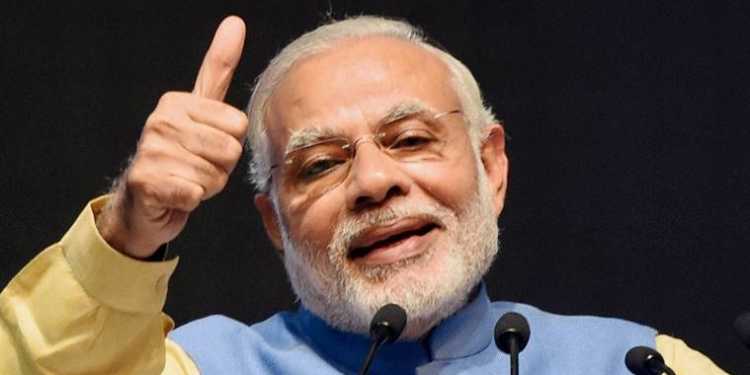The Indian economy last year was struck by a Black Swan called Demonetisation. Well, to begin with its the phrase black swan is derived from Latin “rara avis in terris nigroque simillima cygno” which means a rare bird in the lands that is like a black swan. When this phrase was coined it was believed that the swans are just white and black swans do not exist. The phrase was used by Nicholas Taleb as the title of his book in which he discusses the probability of events that are thought impossible to occur. According to Taleb, a Black Swan event is one which has these three properties. Firstly, it must be out of regular expectations. Nothing in the past should be able to confirm the possibility of its occurrence. Secondly, it must have major impact on an individual or the collective and lastly, despite being beyond expectations it’s presented by experts as something which was bound to happen and they saw it coming. Demonetisation has all the three attributes.
No one could have predicted it before Prime Minister Narendra Modi made the speech on the evening of November 8, 2016, there is no doubt that it had a major impact on the economy, the rationale behind it (crackdown on fake notes circulating in markets and black money prevalent in the economy) was known only after PM addressed the nation. It was repeatedly told that it was a surgery that was necessary to root out the ulcer of corruption and it could only be performed efficiently when the patient is in a healthy state. It implies that the fastest growing economy of the world had to undergo some pain for long term gain. There was much hullabaloo over this bold step which was projected as anti-poor by opposition parties. They tried their best to inflame the negative sentiments against the government and capitalize on the issue.
The former Prime Minister Manmohan Singh termed demonetisation a disaster which would destroy the economy and reduce the GDP from 7.6 % to 5 %.
Apart from former PM, P. Chidambaram made demonetisation the biggest scam of 2016. He predicted the GDP to hit iceberg and flip down to 6.5% which means a hit of 1.5 lakh crore. Different rating agencies and broking houses lowered GDP to different levels for October-December quarter anticipating the temporary disruptions caused by demonetisation. Ambit Capital cut the country’s GDP to 3.5% for the last quarter of 2016 which was the worst predicted by anyone. Morgan Stanley cut the growth for 2016 from 7.6% TO 7.4%.The Fitch ratings downgraded GDP growth to 6.9% from 7.4%.The International Monetary Fund cut the GDP to 6.6% exhibiting slowdown in the economy for the fiscal year 2016.
The 7% GDP for October-December quarter last year announced by Indian government came as a shock to many. Economists pulled their head and scratched their heads as they were unable to believe the figure put up by the Central Statistics Office (CSO). If they are to be believed it’s a big sham and the government tweaked data to make GDP more favorable. As Laurence J. Peter once said an economist is an expert who will know tomorrow why the things he predicted yesterday did not happen today. The metrics that have largely contributed to the growth of economy are Consumption, Agriculture and the taxes.
There are various factors that have contributed to the 7 percent growth. First is the sharp jump in agriculture growth that has increased from 3.8 percent to 6 percent. The numbers also show a steep rise when compared to a contraction of 2.2 percent last. A good monsoon season and increased sowing had led to a rise in agriculture numbers. Even though, the media showed business slowdown because of lack of cash in economy the demand side pull has helped GDP growth. Both government and private consumption increased in the October-December quarter. Private consumption increased by 10 percent in the last quarter as compared to 5 percent in September quarter.
According to CSO statistics the private consumption expenditure is at its highest level since September 2012. This is the surprising factor as most of the high frequency indicators like car sales, two-wheeler sales, consumable and non-consumable growth posted less growth during the demonetization period. Although, GDP numbers have baffled economist expectations they can cheer for getting numbers closer to GVA (Gross Value Added). It slipped at a sharper rate than the GDP growth. The taxes are also playing a major role in keeping GDP high. Manufacturing sector has recorded a growth of 8.3 percent as compared to 6.9 percent in last quarter. However, it is much lower than the growth recorded in previous quarters. The cash crunch was to some extent compensated by alternate cashless payments through e-wallets like Paytm, Freecharge and Mobikwik. These companies all registered hike in users after demonetization with usage even in groceries and general merchant shops.
Prime Minister Narendra Modi also promoted the United Payments Interface (UPI) and Bharat Interface for Money (BHIM) app as the analgesics for the pain of consumers and traders because of demonetization.
The important point to note is that it’s not the first time that the eminent economists of the world have been proved wrong. In 2008 when Queen Elizabeth went to London School of Economics she asked “Why did nobody noticed it?” referring to the Financial meltdown in 2008. Economists are bitten by the fake exactness of mathematics that does not deal with probability in an efficient way.
Coming back to Black Swan, the condition that the event is explained by experts only after it has occurred donning it with the plasticity of reasoning, is beautifully satisfied by these economists. Economists make various models explain the occurrence of the event. The success of the economic model depends on how well the data of the event fits the model. Different events lead to different economic models which contradict each other but who care as long as the model explains the event dealt currently.
As per the United Nations World Economic Situation and Prospects (WESP) report for 2017 the Indian economy will grow by 7.7% in 2017 and by 7.6% in 2018. The report mentioned that India has positioned itself as the most dynamic emerging economy among the largest economies of the world and it is expected to remain the fastest growing. It would continue to be benefitted by increasing private consumption and the domestic reforms that are gradually being implemented by the government.Concludingly, the growth projections prove that Indian economy is not only robust but also Anti-fragile.































